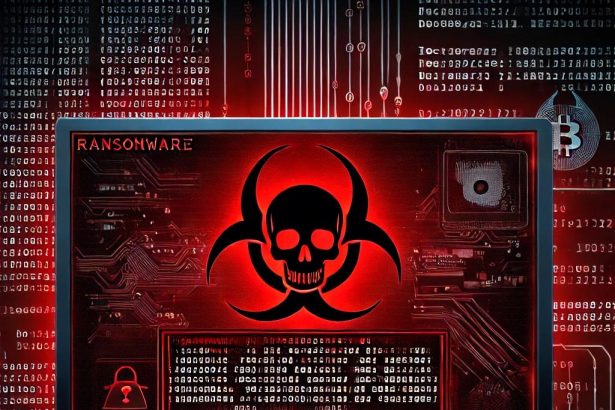APEX ransomware is a newly identified crypto-malware strain that encrypts victims’ files and appends the “.Apex” extension. This ransomware delivers a ransom note named “APEXNOTE.txt,” demanding a hefty payment of $10,000 in Bitcoin via a specified darknet site. Victims are threatened with the destruction of the decryption tool if the ransom isn’t paid within 24 hours.
Overview of APEX Ransomware
APEX operates as a file-encrypting ransomware, targeting various file types and rendering them inaccessible without a decryption key. The malware appends the “.Apex” extension to encrypted files, effectively locking users out of their data. The ransom note provides instructions for payment and threatens permanent data loss if demands aren’t met promptly.
APEX Ransomware Summary
| Category | Details |
|---|---|
| Threat Type | Ransomware, Crypto Virus, File Locker |
| Encrypted Extension | .Apex |
| Ransom Note | APEXNOTE.txt |
| Ransom Amount | $10,000 in Bitcoin |
| Contact Method | Specified darknet website |
| Detection Names | Avast (Win32:MalwareX-gen [Ransom]), Combo Cleaner (Generic.Ransom.Hiddentear.A.C44A94B0), ESET-NOD32 (A Variant Of MSIL/Filecoder.AK), Kaspersky (HEUR:Trojan-Ransom.MSIL.Agent.gen), Microsoft (Ransom:MSIL/Ryzerlo.A) |
| Symptoms | Files inaccessible with .Apex extension; ransom note displayed |
| Damage | Complete data encryption; potential installation of additional malware |
| Distribution Methods | Infected email attachments, pirated software, technical support scams, torrent websites, malicious ads |
| Danger Level | High |
| Removal Tool | SpyHunter |
Detailed Analysis
How Did I Get Infected?
APEX ransomware spreads through multiple vectors:
- Email Attachments: Malicious emails with infected attachments.
- Pirated Software: Downloading and installing unauthorized software.
- Technical Support Scams: Deceptive pop-ups leading to malware installation.
- Torrent Websites: Downloading files from unverified sources.
- Malicious Ads: Clicking on compromised advertisements.
What Does APEX Ransomware Do?
Once executed, APEX encrypts a wide range of file types, appending the “.Apex” extension to each. It then generates a ransom note, “APEXNOTE.txt,” detailing the ransom demand and payment instructions. The note emphasizes the urgency by threatening to destroy the decryption tool if payment isn’t received within 24 hours.
Should You Be Worried?
Absolutely. APEX not only encrypts your files but may also introduce additional malware, such as password-stealing trojans. The high ransom demand and the threat of permanent data loss make it a severe threat to both individuals and organizations.
APEX Ransom Note Text
APEX RANSOMWARE
Attention Dear User. All of your files and personal information have been encrypted.
These encrypted files are now completely corrupted and unusable.
Your unique decryption key is stored securely on our private server.
Any attempt to recover your data without this key will result in permanent loss.
Visit our darknet site and pay $10,000 in Bitcoin to receive your decryption tool.
WARNING: If payment is not made within 24 hours, the decryption tool will be destroyed and your data lost forever.
Do not attempt to decrypt files with third-party software – this will corrupt your files permanently.
Manual Ransomware Removal Process
Important: Manual removal is recommended only for experienced users, as incorrect actions can lead to data loss or incomplete removal of the ransomware. If unsure, consider the SpyHunter Removal Method for a guided, automated solution.
Step 1: Disconnect from the Internet
- Immediately disable Wi-Fi or unplug the Ethernet cable to prevent the ransomware from communicating with remote servers.
- This can prevent additional encryption or further infections.
Step 2: Boot into Safe Mode
For Windows Users
- Windows 10/11:
- Press Windows + R, type
msconfig, and press Enter. - Under the Boot tab, select Safe boot and check Network.
- Click Apply, then OK, and restart your PC.
- Press Windows + R, type
- Windows 7/8:
- Restart your PC and press F8 repeatedly before Windows starts.
- Select Safe Mode with Networking and press Enter.
For Mac Users
- Restart your Mac and hold the Shift key immediately after the startup chime.
- Release the key when the Apple logo appears.
- Your Mac will boot in Safe Mode.
Step 3: Identify and Terminate Malicious Processes
Windows
- Open Task Manager by pressing Ctrl + Shift + Esc.
- Look for unusual processes consuming high CPU or memory.
- Right-click on the suspicious process and select End Task.
Mac
- Open Activity Monitor (Finder > Applications > Utilities > Activity Monitor).
- Look for unknown or high-resource-consuming processes.
- Select the suspicious process and click Force Quit.
Step 4: Delete Ransomware Files
Windows
- Open File Explorer and navigate to:
C:\Users\[Your Username]\AppData\LocalC:\Users\[Your Username]\AppData\RoamingC:\Windows\System32
- Identify and delete suspicious files (randomly named or recently modified items).
- Clear temporary files:
- Press Windows + R, type
%temp%, and hit Enter. - Delete all files in the Temp folder.
- Press Windows + R, type
Mac
- Open Finder and select Go > Go to Folder.
- Type
~/Library/Application Supportand check for unfamiliar files or folders. - Remove unknown
.plistfiles from~/Library/LaunchAgents.
Step 5: Remove Ransomware Entries from Registry or System Settings
Windows
- Press Windows + R, type
regedit, and hit Enter. - Navigate to:
HKEY_CURRENT_USER\SoftwareHKEY_LOCAL_MACHINE\Software
- Identify and delete ransomware-related registry entries.
Mac
- Open System Preferences > Users & Groups.
- Select the Login Items tab and remove any unknown startup programs.
- Check
~/Library/Preferencesfor malicious settings.
Step 6: Restore System Using a Backup or Restore Point
Windows
- Press Windows + R, type
rstrui, and press Enter. - Choose a restore point from before the infection and proceed.
Mac
- Restart your Mac and enter macOS Utilities by holding Command + R.
- Select Restore from Time Machine Backup and restore a safe backup.
Step 7: Attempt to Decrypt Files
- Check No More Ransom (www.nomoreransom.org) for available decryption tools.
- If unavailable, restore files from backups.
Automated Ransomware Removal with SpyHunter
If manual removal is too complex or risky, SpyHunter offers a safer, automated method for detecting and removing ransomware.
Step 1: Download SpyHunter
- Get SpyHunter from the official Enigma Software website.
Step 2: Install SpyHunter
- Open the downloaded file (
SpyHunter-Installer.exeor.dmgfor Mac users). - Follow the installation prompts.
- Launch SpyHunter upon completion.
Step 3: Run a Full System Scan
- Click Start Scan Now to detect malware and ransomware.
- Wait for the scan to complete and review detected threats.
Step 4: Remove Detected Ransomware
- Click Fix Threats to remove identified ransomware components.
- SpyHunter will clean your system automatically.
Step 5: SpyHunter’s Custom Malware HelpDesk
- If ransomware persists, use SpyHunter’s Malware HelpDesk for custom malware fixes.
Step 6: Restore Files
- Use backups stored on external drives or cloud storage.
- If no backup is available, check No More Ransom for decryption tools.
Preventing Future Ransomware Attacks
- Keep backups: Use cloud storage or an external hard drive.
- Install a reliable security tool: SpyHunter offers real-time protection against malware.
- Enable Windows Defender or Mac security features for additional protection.
- Avoid phishing emails and unknown attachments.
- Regularly update Windows, macOS, and installed applications.
Conclusion
APEX ransomware represents a significant cybersecurity threat, encrypting vital data and demanding exorbitant ransom payments. Immediate action is required to mitigate damage. Utilize reputable anti-malware tools like SpyHunter to remove the infection. Regular backups and cautious online behavior are essential preventive measures.




